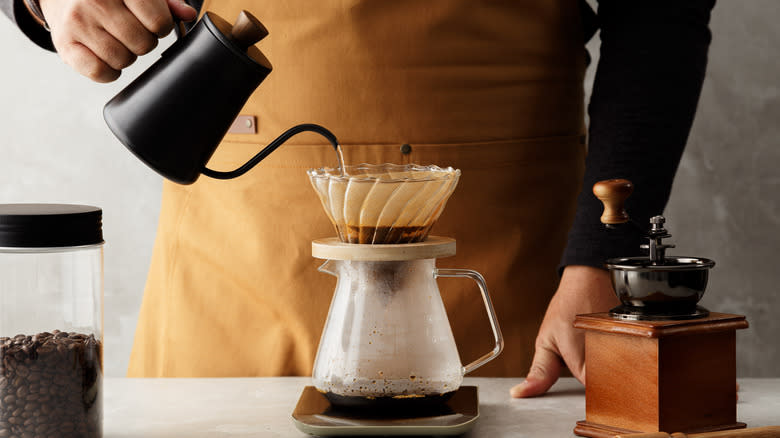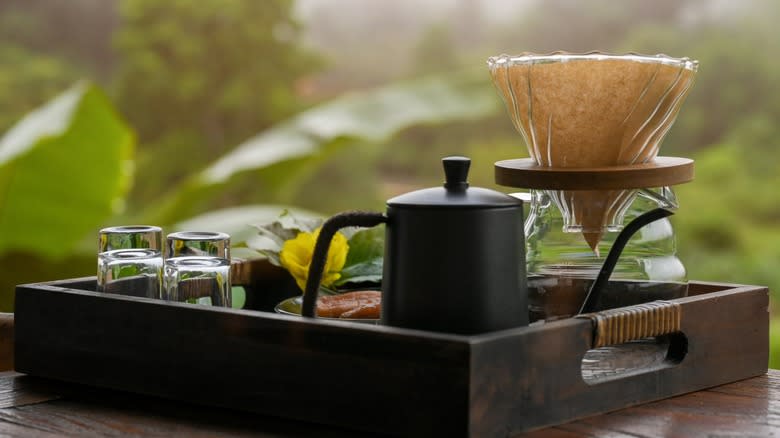How To Use Your Drip Coffee Maker For Pour-Over Brews

When it comes to making coffee at home, many coffee enthusiasts swear by pour-over coffee. With pour-over, you have greater control over the entire brewing process, including the temperature, brewing speed, and the amount of coffee you make. Experienced pour-over users can extract a superb brew with perfectly balanced and nuanced flavors. However, if you're picky about your coffee, you might have noticed that budget drip coffee makers often don't heat up enough to produce a good brew.
When the water isn't hot enough, it can't fully extract the flavors from the coffee grounds, resulting in disappointingly sour-tasting coffee. But there's a simple hack: You can transform your regular drip coffee maker into a pour-over setup and boil your water separately. First, unplug your coffee maker. It doesn't need to be on for this to work. Next, prepare your coffee grounds and put them in the filter basket, just as you would for a regular drip brew.
Then, heat water in an electric kettle until it's near-boiling (between 195 and 205 degrees Fahrenheit is the ideal temperature range for the best coffee brew). Slowly pour the hot water over the coffee grounds, making sure to saturate them evenly. You're all set! You can carry on with the rest of your morning routine as the coffee brews in the pot. It typically takes the same amount of time to brew as a regular pour-over, which is about three to four minutes.
Read more: 26 Coffee Hacks You Need To Know For A Better Cup
How Does Drip Coffee Differ From Pour-Over?

There's a world of difference between drip coffee and pour-over, and it might surprise many that you can actually make pour-over coffee using a basic drip coffee machine. The main distinction lies in the brewing process. Drip coffee makers work on the same principle as pour-over, which involves passing hot water through coffee grounds to extract flavors, with the resulting brew collecting below. However, in a drip coffee maker, the process is fully automated. The machine handles both heating the water and pouring it over the coffee grounds, making it incredibly convenient to use, though the resulting brew may not be the most flavorful.
In contrast, pour-over is a manual method that offers precise control over the speed of water pouring, resulting in a more nuanced and balanced flavor profile. Temperature control is another crucial factor. As we mentioned earlier, drip machines often have subpar heating elements, which can lead to inadequate water temperature for a good brew.
When you use pour-over, you have the advantage of boiling your own water, ensuring that the water temperature is just right for bringing out the coffee's wonderful flavors. The trick we've just explained essentially combines the best of both worlds. You can brew pour-over coffee in a drip coffee maker and then pour it into a ready-to-serve carafe. Despite having to boil your own water, the significantly more flavorful brew is well worth the extra effort!
Read the original article on Tasting Table.

